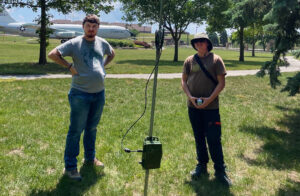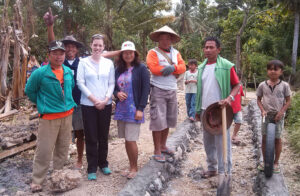CEMML teams work closely with installation Range Management offices to ensure that land management projects meet the requirements of training missions. CEMML’s Integrated Training Area Management (ITAM) expertise includes: Training Requirements Integration (TRI), Land Rehabilitation and Maintenance (LRAM), Range and Training Land Assessments (RTLA), Sustainable Range Awareness (SRA), and Geographic Information Systems (GIS) support.
ITAM Services
Training Requirements Integration (TRI)
- Integration of land management objectives that support training missions with strategies to conserve natural and cultural resources.
- Compliance with National Environmental Policy Act and other environmental laws to avoid restrictions on training.
Land Rehabilitation and Maintenance (LRAM)
- Identification of LRAM projects needs and sustainable land management strategies and recommendations based on environmental conditions.
- Soil stabilization and vegetation management to maintain, repair, and reconfigure areas that support military training and testing missions.
- LRAM mitigation and compliance practices such as designing and installing approved projects in support of the Clean Water Act, buffer zones for wetlands, and protective caps for archaeological sites.
Range and Training Land Assessments (RTLA)
- Range and Training Land Assessments, including identification of landscape, vegetation, and soil conditions that meet the training requirements of Mission Essential Task Lists, Programs of Instruction, and mission commanders.
Sustainable Range Awareness (SRA)
- Production of natural and cultural resources awareness and outreach materials for military installations, such as customized graphics, brochures, wall calendars, and field cards.
Geographic Information Systems (GIS) Support
- Expertise in spatial database management, analysis, cartography, custom programming, and remote sensing.
- Development of military installation maps; mapping of LRAM projects; and GIS support for range operations, range modernization, and training missions.
Related Stories

CEMML botanists help gain recognition for new Hawaiian plant species
After 35 years since its initial discovery, Hawai’i has a newly recognized species of pamakani, thanks to the persistance of CEMML biologists. Dubbed Tetramolopium stemmermanniae, the daisy-like plant joins 47 other species of rare plants found within Hawaiʻi’s U.S. Army Garrison Pōhakuloa Training Area.

Spreading the love of monarchs: CEMML intern works with Midwestern pollinators
As part of his CEMML internship, Alexx Uecker’s work for the Midwest Natural Resources Program of the Air Force Civil Engineer Center gave him the opportunity to study bats and support important pollinators like the monarch butterfly. During his six-month experience, Uecker supported monitoring and survey efforts at Air Force bases across the Midwest.

Ecology expert joins CEMML Executive Committee
After 7 years as a principal investigator, Dr. Mindy Clarke joins CEMML’s executive committee as an assistant director. Clarke brings 25 years of environmental management experience to CEMML’s leadership team and a passion for bridging the gap between science and management.